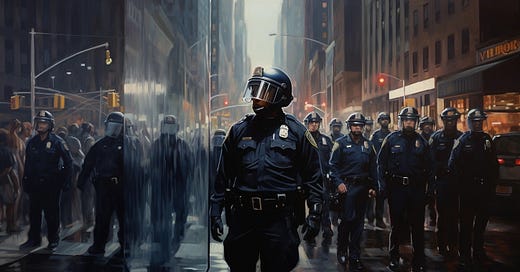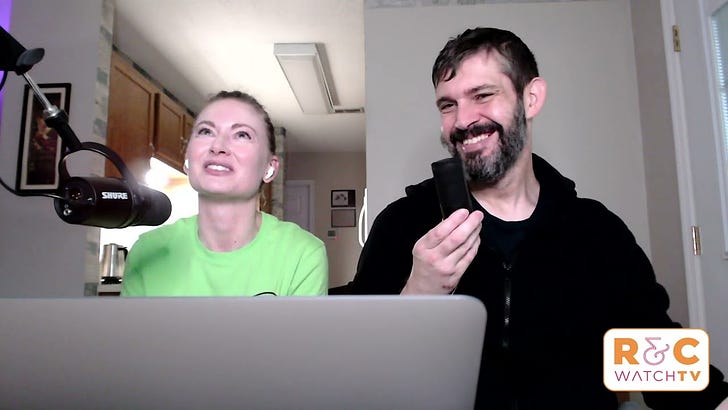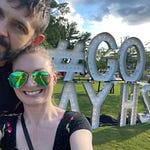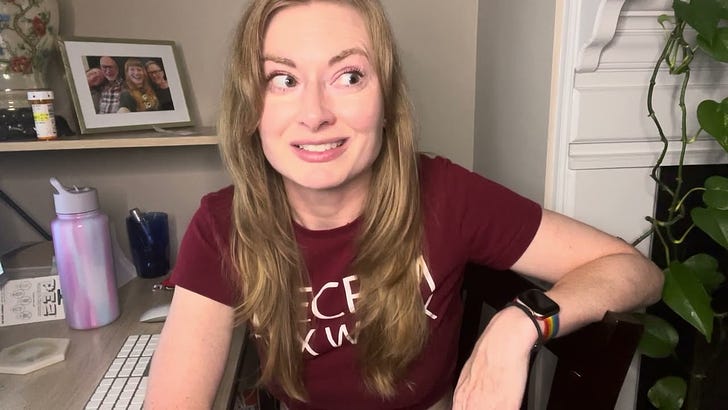Welcome to the sixth post in the ACAB case for weaksauce police reform series.
Part one: The ACAB case for paying cops more
Part two: The ACAB case for hiring more officers
Part three: The ACAB case against proactive policing
Part four: The ACAB case for community policing
Part five: The ACAB case for public police records
Today, we’re keeping the accountability train rolling with a post about one of the biggest barriers to police transparency and accountability: Police obfuscation.
Obfuscation, for those of you who didn’t grow up reading the dictionary for fun, is when you make something obscure, unclear, or unintelligible. Obfuscation is pretty antithetical to transparency and accountability.
This post will briefly cover four common ways cops and departments obfuscate, along with some examples. And I’ll introduce the most obvious solution to this problem.
How cops obfuscate
Law enforcement officers and departments have found myriad ways to cover up misconduct. But their tactics often fall into four main categories:
Fucking with their recording equipment
Hiding the recordings that do exist
Disregarding laws requiring them to report their behavior
Punishing people who attempt to tell the truth about them
Let’s quickly go over each method of officer obfuscation, along with a few examples.
1. Subverting surveillance
Proving that police abuse happened often comes down to the suspect’s word against the officer’s. Which is a problem, since suspects are generally perceived as less reliable witnesses than cops. That’s often a misperception. But that’s a topic for another post.
Another problem is that cops tend to target the people they think are least likely to be believed.
For example, Daniel Holtzclaw raped eight different women while working as an Oklahoma City police officer. He got away with it for so long in part because he chose to rape Black women with criminal backgrounds.
Citizens with smartphones have definitely helped. They’ve been especially useful for bringing instances of excessive force into public awareness.
Another proposed solution to this problem is requiring cops to wear body cameras while on-duty.
Many people hoped body cams would discourage bad behavior and would help ensure there was an objective record if shit still went down.
Here’s the thing. At this point I really need to take a quick sec to point out that it says every single thing you have ever or will ever need to know about the police and their relationship with the truth and the communities they’re supposed to serve that body cams are even part of the conversation.
In a vaguely functional universe, if my employer decides they cannot trust me to do my job without breaking the law or company policy, the correct next move is not to strap a camera to my chest to record my every move while I’m at work. The only possible reasonable response to that level of distrust is to FIRE ME. YESTERDAY.
Between the spankings, time out, and baby monitors, it may be time for a frank conversation about why we treat people who carry large guns like they’re small children. (The answer is unions. But we’ll get to that in a later post.)
Back to the matter at hand. Or, uh, chest.
Unfortunately, it’s really hard for body cams to effectively hold cops accountable for misconduct. That’s mostly because cops routinely refuse to actually wear, turn on, and not tamper with their recording equipment.
Examples abound of officers tampering with recording devices and other forms of evidence. For example, it’s common for police to fail to activate their body cams or claim they malfunctioned or fell off during police killings.
In one case, officer Jason Van Dyke shot Laquan McDonald 16 times. He fired some of those shots after the Black teenager fell and lay motionless on the ground. Afterward, police intentionally destroyed Van Dyke's dash cam microphone.
Video footage shows Beverly Hills police playing Beatles tunes to trigger copyright filters to keep body cam footage off the internet. Another officer said they prefer Taylor Swift for that purpose.
Currently, cops and departments face zero consequences of any kind when they fail to use their devices, use them improperly, or destroy the resulting footage.
2. Hiding the evidence
On the rare occasion a cop is using all their mandatory recording equipment as directed when an event occurs, they often simply refuse to turn the evidence over afterwards if they worry they don’t come off well.
For example, in 2020 the Los Angeles County Sheriff’s Department refused to allow overseers to see documents and video pertaining to two separate deputy-involved shootings.
That same year, LAPD officers shot Andres Guardado to death. In the aftermath, the department hid basic details about what happened and refused to release the autopsy report and surveillance footage.
Oakland police missed a self-imposed deadline to release their self-assessment on tear gas use against citizens after the community demanded to know more about why they gassed a gathering of students, families and seniors.
3. Breaking reporting laws
Sadly, the obfuscation problem goes deeper than individual officers hiding their individual misdeeds. It’s systemic.
Entire departments thwart transparency by simply refusing to keep adequate records of their activity, even when the law requires them to do so.
For example, the Office of Inspector General (OIG) found serious problems with the Chicago Police Department’s records management and production system in June 2020. A year later, OIG found CPD had made zero substantive changes.
Or look at Texas, which passed the Sandra Bland Act in 2017 to gather data on whether officers treat Black and white drivers differently during traffic stops. The Texas Commission on Law Enforcement collected all of the required data, except the driver’s race.
For decades, federal law has required every police department in the US to report every killing at the hands of a police officer to the federal government. At no point has even close to every department complied. And the repercussions for non-compliance? Zero. It’s not shocking then that federal government data dramatically underreports instances of police killing Black Americans.
Instead of the federal government, two newspapers are responsible for the most complete aggregation and reporting on police killings in the US.
4. Punishing whistleblowers
Many, if not most, law enforcement agencies are led and staffed by individuals who are clearly unwilling or unable to do the bare minimum to follow their city’s requirements and obey the law of the land.
Whistleblowers exist to shed light on corrupt and/or incompetent systems. They’re especially vital when those systems pose a real and present danger to the public. Police misconduct isn’t just dangerous to the point of deadly to the people involved directly. But it also erodes trust between law enforcement and communities and erodes the rule of law.
And to put the shit icing on the shit cake of police transparency, often the only people who get punished when cops misbehave are the people who refuse to keep quiet about it.
For example, five Baton Rouge Police Department (BPRD) officers strip-searched a minor. They then entered the family's home without consent, with guns drawn, with no warrant. So the East Baton Rouge’s Parish Attorney's Office tried to incarcerate someone. But not an officer. Most of them didn’t even lose their jobs. They tried to jail a professor who shared publicly available body camera footage of the incident.
An NYPD whistleblower was forcibly admitted to a psychiatric facility in retaliation for recording his supervisors discussing a quota system.
In Illinois it’s a felony to record the police. Lawmakers have introduced similar legislation in Arizona. Protestors face felony charges for distributing flyers identifying an officer they believe is linked to the killing of a protester in the Atlanta forest. In Southeastern Oklahoma, the sheriff who discussed killing two journalists said the recording was illegal and predicted felony charges.
The solution
Once again, I completely and utterly reject the concept of disciplining armed adult humans. Every single instance of an officer or department failing to record an incident, failing to turn over footage to any party that requests it, failing to record data they’re legally required to record, or punishing a whistleblower should have one result and one result only: Every person involved needs to immediately find themselves in need of a new line of work.
As for policy, Colorado's SB20-217 is a great template. It requires the AG’s office to record every time an officer lies, repeatedly fails to meet training requirements, or is decertified or terminated for cause. But, we already know that laws alone won’t do jack shit if they don’t come with teeth. So any new legislation must have an enforcement mechanism harsh enough to actually compel compliance and a regulatory body willing and ready to actually enforce the laws as written.
And every single law that prohibits recording and/or sharing information about police behavior needs to be struck immediately.
Sex and the State is a newsletter at the intersection of policy and people. Like it? Upgrade to a paid subscription, buy a guide, follow me on Twitter, support me on Patreon, or just share this post 🙏
~~~~~
This ⬇️ is an affiliate link! Sign up today to support me!
Join the reading revolution! Get key ideas from bestselling non-fiction books, distilled by experts into bitesize text and audio. Explore our vast library of over 5,500 titles and stay up-to-date with 40 new titles added each month.
















Share this post